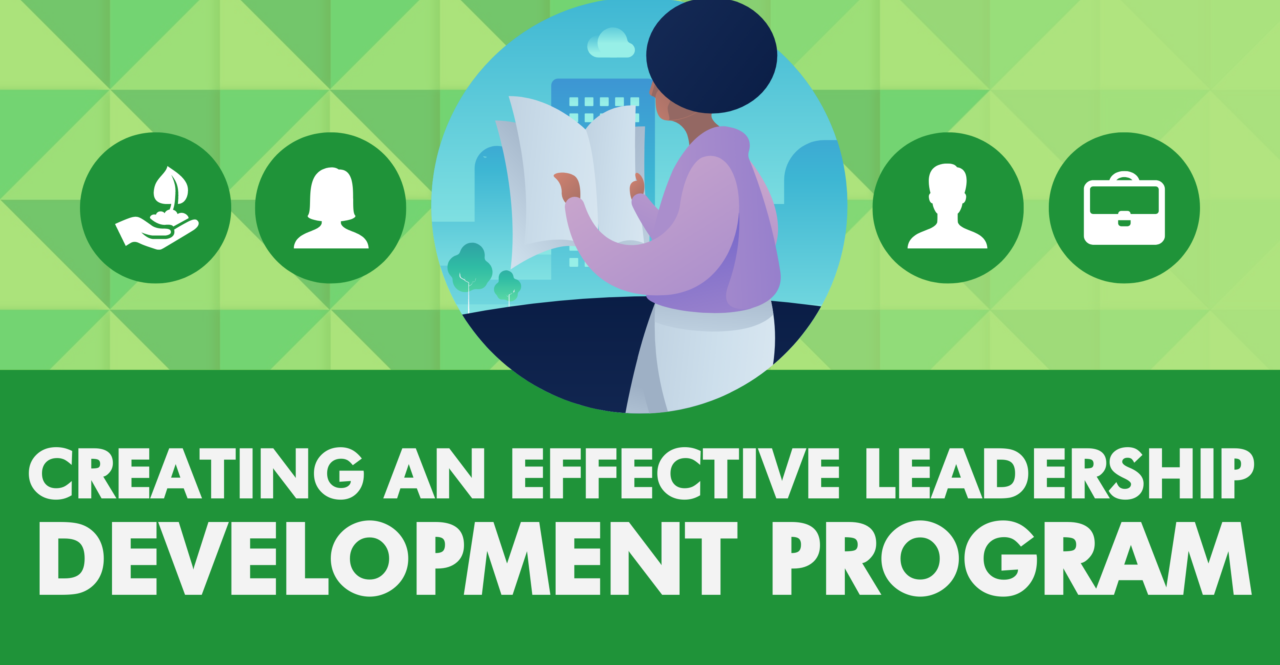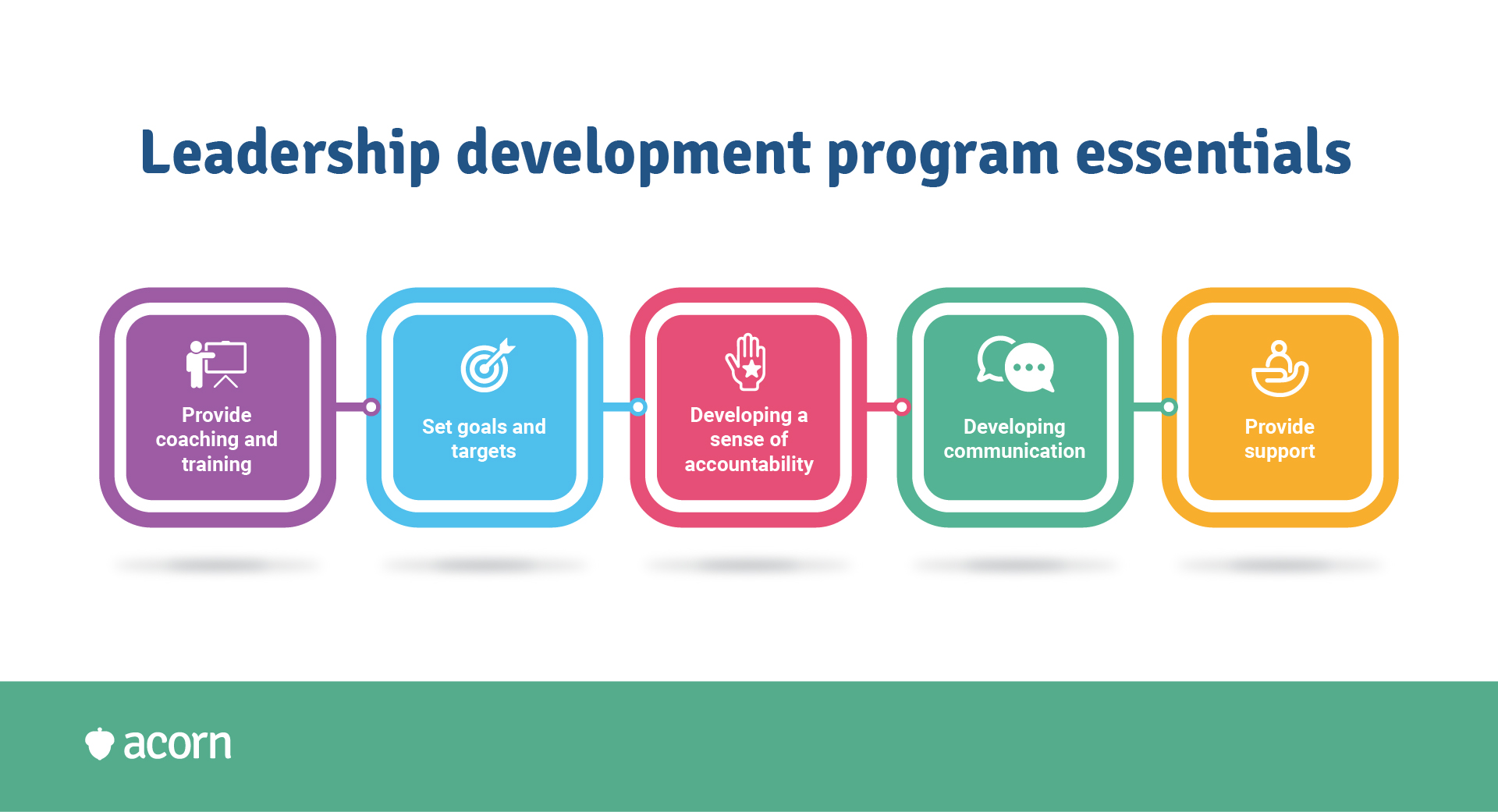Building a leadership development program is crucial for organizations seeking to foster a culture of excellence and drive sustained growth. This comprehensive guide provides a roadmap to create a program that empowers individuals to develop the skills and competencies necessary to lead effectively in today’s dynamic business environment.
By carefully considering program design, delivery methods, assessment strategies, and sustainability, organizations can establish a leadership development program that delivers tangible results and contributes to the overall success of the organization.
Program Overview

Our leadership development program is designed to empower aspiring and existing leaders to enhance their capabilities and drive organizational success.
This program targets individuals who demonstrate leadership potential and are eager to elevate their leadership skills. Participants may come from various levels of experience and may possess varying degrees of leadership proficiency.
Target Audience
The target audience for this program includes:
- Emerging leaders with high potential
- Mid-level managers seeking to strengthen their leadership foundation
- Senior executives aspiring to refine their strategic leadership abilities
Assessment and Evaluation
To ensure the effectiveness of your leadership development program, it’s crucial to establish methods for assessment and evaluation. This will help you determine the impact of the program and make improvements over time.
There are various ways to assess the effectiveness of a leadership development program. Some common methods include:
Participant Feedback
- Conduct surveys and interviews to gather feedback from participants on their experience, learning outcomes, and the overall effectiveness of the program.
- Establish a feedback loop to collect ongoing feedback and make adjustments to the program as needed.
Performance Measurement
- Track participant performance and progress before, during, and after the program to measure the impact of the training on their leadership skills and behaviors.
- Use metrics such as performance reviews, 360-degree feedback, and key performance indicators (KPIs) to assess changes in leadership effectiveness.
Return on Investment (ROI)
- Calculate the return on investment (ROI) of the program by comparing the costs of the program to the benefits it generates, such as increased productivity, employee retention, and improved customer satisfaction.
- Use metrics such as cost per participant, cost per hour of training, and increased revenue to assess the financial impact of the program.
Sustainability

To ensure the long-term success of your leadership development program, it’s crucial to implement strategies that promote sustainability.
One key element is securing funding and resources. Explore various funding sources, such as grants, corporate sponsorships, and tuition fees. Consider establishing partnerships with organizations that share similar goals, as they can provide financial support and in-kind contributions.
Alumni Engagement
Engaging with program alumni is vital for sustainability. Establish an alumni network to foster ongoing connections, provide mentorship opportunities, and gather feedback. Encourage alumni to participate in program events, guest lectures, and advisory boards.
Continuous Learning
Incorporate continuous learning opportunities into the program. Offer workshops, seminars, and online courses to keep participants up-to-date with emerging leadership trends and best practices. Encourage participants to pursue further education, such as graduate degrees or certifications.
Budget and Resources: Building A Leadership Development Program

The financial and resource implications of your leadership development program are crucial considerations. Accurately estimating costs, identifying funding sources, and creating a detailed budget will ensure the program’s sustainability and effectiveness.
Cost Estimation
Carefully assess the expenses associated with your program, including:
Materials
Training manuals, workbooks, assessments, etc.
To cultivate future leaders, building a comprehensive leadership development program is essential. For those in the Washington, D.C. area, consider exploring leadership training washington dc programs. They offer tailored training to enhance leadership skills, fostering personal and professional growth. By incorporating these insights into your development program, you can equip aspiring leaders with the knowledge and abilities necessary to navigate the complexities of today’s business landscape.
Trainers
Fees for external facilitators or internal trainers’ time allocation.
Venue rentals
Costs for meeting spaces, training rooms, or conference facilities.
To craft an effective leadership development program, consider the unique needs of your organization. Explore specialized programs like edd higher education leadership to enhance the skills of aspiring leaders. By aligning the program with your specific objectives, you can foster a culture of excellence and drive organizational success.
Technology
Equipment and software for virtual or hybrid training sessions.
Funding Sources
Explore various funding options to support your program:
Internal funding
Allocate a budget from the organization’s operational expenses.
External grants
Seek funding from government agencies, foundations, or corporate sponsors.
Partnerships
Collaborate with external organizations or educational institutions to share costs and resources.
Budget Breakdown
Create a detailed budget that Artikels the costs and funding sources for each phase of the program:
Development
Planning, design, and materials creation.
Implementation
Training delivery, participant expenses, and venue rentals.
Evaluation
Data collection, analysis, and reporting.
When building a leadership development program, it’s crucial to define the core leadership imperatives that will guide your efforts. For inspiration, consider the johnson and johnson leadership imperatives. These imperatives emphasize integrity, customer focus, and continuous improvement. By incorporating these principles into your program, you can create a robust framework for developing effective and ethical leaders.
Maintenance
Ongoing support, updates, and program enhancements.
Program Implementation

Program implementation is the process of putting the leadership development program into action. It involves several key steps, including:
Timeline and Responsibilities
- Planning and design:Develop the program curriculum, materials, and delivery methods. (3 months)
- Participant recruitment and selection:Identify and enroll participants. (2 months)
- Program delivery:Conduct the program sessions, workshops, and activities. (6 months)
- Evaluation and assessment:Track progress and make adjustments as needed. (Ongoing)
Communication Plan, Building a leadership development program
A communication plan ensures that participants and stakeholders are informed about the program. It should include:
- Program announcements:Inform participants about the program goals, objectives, and schedule.
- Progress updates:Provide regular updates on the program’s progress and participant performance.
- Feedback collection:Gather feedback from participants to identify areas for improvement.
Monitoring System
A monitoring system tracks the program’s progress and identifies areas for improvement. It should include:
- Data collection:Gather data on participant attendance, engagement, and performance.
- Analysis:Review the data to identify trends and patterns.
- Reporting:Share the analysis findings with stakeholders and make recommendations for adjustments.
Final Summary

In conclusion, building a leadership development program is an investment in the future of your organization. By following the steps Artikeld in this guide, you can create a program that attracts, develops, and retains exceptional leaders who are equipped to drive innovation, inspire teams, and achieve organizational goals.
Expert Answers
What is the purpose of a leadership development program?
The purpose of a leadership development program is to enhance the leadership skills and competencies of individuals within an organization, preparing them to take on greater responsibilities and drive organizational success.
What are the key elements of a successful leadership development program?
Key elements include defining program objectives, identifying target audience, developing a comprehensive curriculum, utilizing effective delivery methods, implementing robust assessment strategies, and ensuring program sustainability.
How can I measure the effectiveness of my leadership development program?
To measure effectiveness, consider using metrics such as participant feedback, performance evaluations, and organizational outcomes. Regularly gather data to track progress and make necessary adjustments to enhance the program over time.